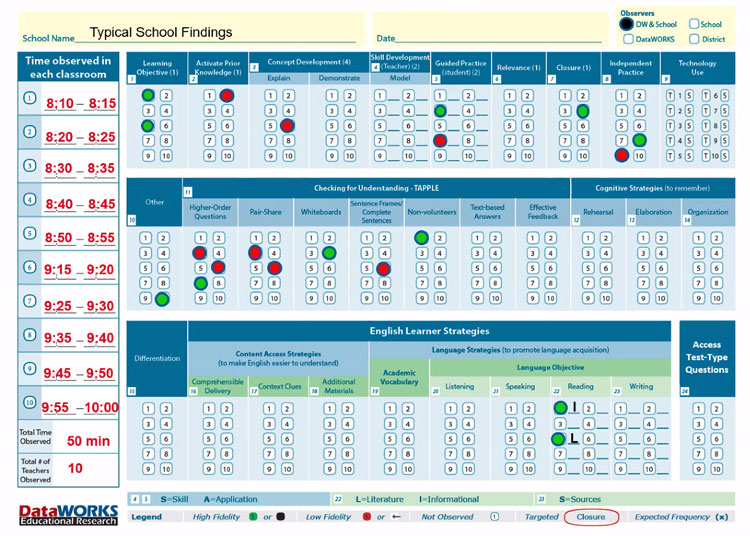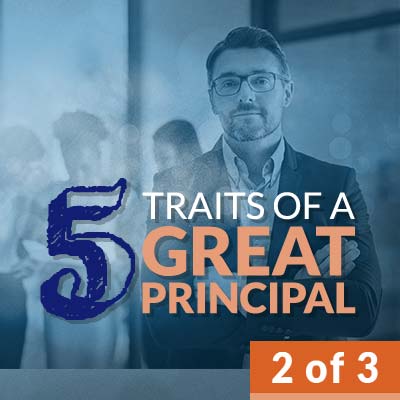Instructional Leadership Program For K-12 Educators
Instructional Leaders maintain a relentless focus on improving how students are TAUGHT. DataWorks shows you how to master the tools and language of instructional excellence with a complete instructional reform model designed to develop instructional excellence at school sites by maintaining a relentless focus on what occurs inside the classroom each day.
Instructional Leaders focus on the instructional program, operations managers focus on the facilities. Which are you?

Get Started With This Training
Fill out the form and we’ll show you how DataWorks will:
– Customize a professional development experience that meets the needs of your school or district.
– Help leadership help teachers improve lesson design and delivery, increase student engagement, and enable students to learn more the FIRST time they are taught. (This is the secret to raising student achievement: students have learned more.)
Ready To Meet Our Education Experts?
Use the button below to book a meeting on our calendar
Why Consider Our Instructional Leadership Program?
If you’d like to increase attendance, minimize behavioral problems, and help students learn more and faster, then DataWorks Instructional Leadership Workshop will show you how to do it, starting with creating schoolwide student engagement.
Read the full article about how you can implement schoolwide student engagement
Does It Work For All Teachers?
The key to effective focus on instructional excellence in your school is the tools and language that you use with your teachers and staff. Our Instructional Leadership Workshop will help you take your administrative capability to the next level.
Read the full article about the top 5 traits of a great principal.
About Our Instructional Leadership Program
If you want to sharpen the focus of your school on instructional excellence, then you need to bring a common language, common resources, and common teaching strategies to your staff. Our training helps to provide a detailed vision of what instructional excellence looks like and helps to develop the capacity to implement it at your school.
Read the full article about 4 steps to instructional excellence.
Training Includes Classroom Observations
Instructional Leadership includes how to make effective classroom observations and provides coaching feedback to teachers. Administrators, teachers, and coaches learn to recognize and name the research-based strategies that effective teachers use in the classroom as they are used.
An observation checklist is presented to teachers ahead of classroom observations – setting a clear expectation for instructional excellence. Finally, during observations, administrators learn to provide consistent feedback only on what was seen or not seen, omitting opinions from their feedback.

How The Classroom Observations Work
The Instructional Leadership Program brings DataWorks training consultants and administrators into the classroom to observe, monitor, and analyze classroom instruction to improve the effectiveness of teachers.
Step 1
This program begins with an administrator training where DataWorks’ consultants demonstrate by example or by video what each research-based strategy is, and how the strategy should look when used in the classroom.
Step 2
Together with the DataWorks’ consultant, administrators and coaches do five-minute observations in 10 different classrooms on campus. Following each observation, the group will convene in the hall outside the classroom to compare their observations and explain what feedback should be delivered to the teacher who was just observed. The consultant will ensure that feedback is tied to the strategies discussed in the training.
Step 3
The administrators and DataWorks debrief to summarize their findings. Then they prepare a report of strengths and weaknesses to share with all teachers, including practices that work successfully throughout the school, strategies that were not implemented correctly, strategies that were omitted, and the team selects 2-3 strategies that should be focused on throughout the school.
Step 4
Once the entire staff has mastered the language of instructional excellence and knows the expectations, administrators and coaches begin doing regular, random classroom observations looking for the specific strategies and using their observation checklist to document what they see.
External evaluation commissioned by the S.H. Cowell Foundation, Jane David and Joan Talbert made the following statements about Sanger Unified’s use of Explicit Direct Instruction:
“With training and support in Explicit Direct Instruction (EDI) from DataWorks, the principal and teacher coach at this school taught their staff a specific set of strategies for developing and teaching lessons designed to help struggling students. One of the poorest schools with half their students classified as English learners, their success created demand, spurring interest among principals and teachers in implementing EDI in their schools. Grounded in Madeleine Hunter’s elements of effective lessons, the principles embodied in Explicit Direct Instruction (EDI) over time became the district’s de facto definition of effective lessons.”
Read the full study here: Turning Around A High-Poverty District
Read Our Instructional Leadership Program Guide


How Does This Help Students?
By using the tools and language provided in the Instructional Leadership program, administrators will begin to see instant improvement in teaching practices.
Is This Training Necessary?


When to Deploy This Training
Schools address leadership when they are seriously trying to improve student learning by addressing classroom instruction. Effective leadership is key in implementing school reform at the classroom level. Such a program becomes valuable in situations where the school seeks to develop a cohesive and effective instructional model, foster a culture of continuous improvement, and align instructional practices with educational goals.
This type of program is particularly beneficial during periods of transition, such as when a new curriculum is introduced, teaching methods are being modernized, or when the school is aiming to address specific student performance challenges.
Administrators Will See Immediate Improvement
By fostering a culture of shared responsibility for student success and providing ongoing professional development, an instructional leadership program helps ensure that teaching practices are well-aligned, student needs are met, and educational outcomes are consistently improved.

Before And After Instructional Leadership Videos
The first video shows a teacher in the classroom teaching a lesson using basic teaching strategies.
The second video shows how the Instructional Leadership program can take teaching to the next level.




